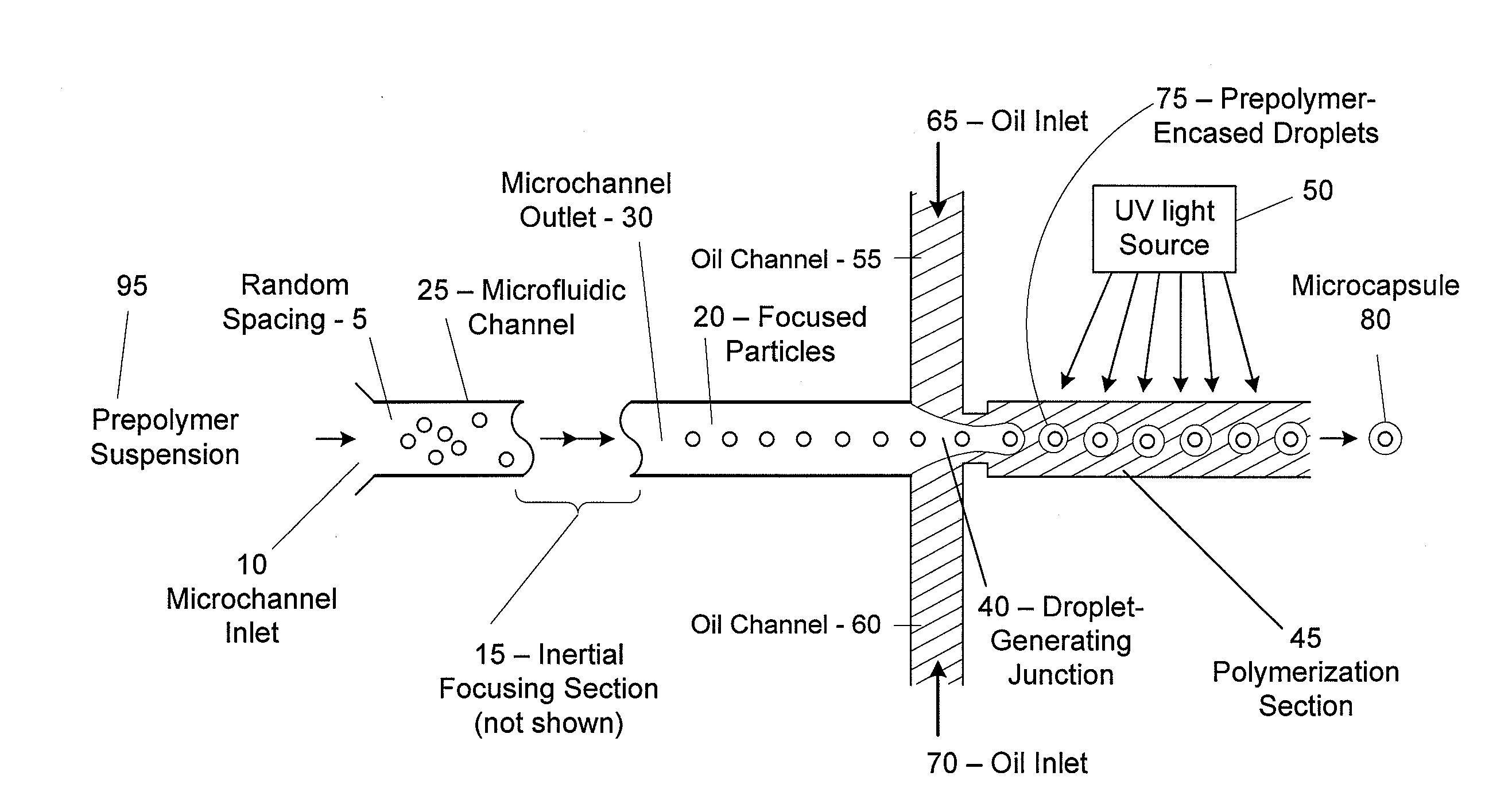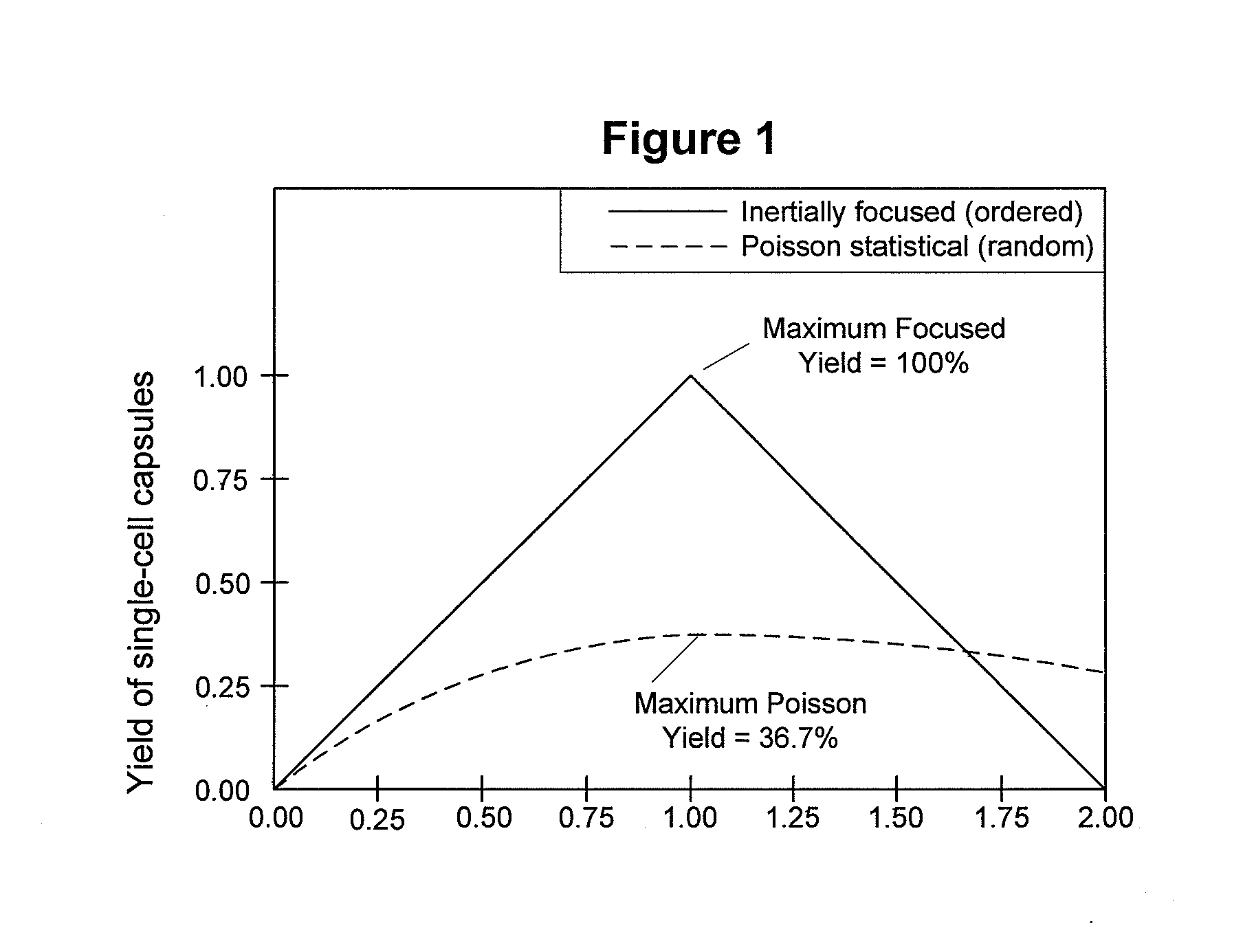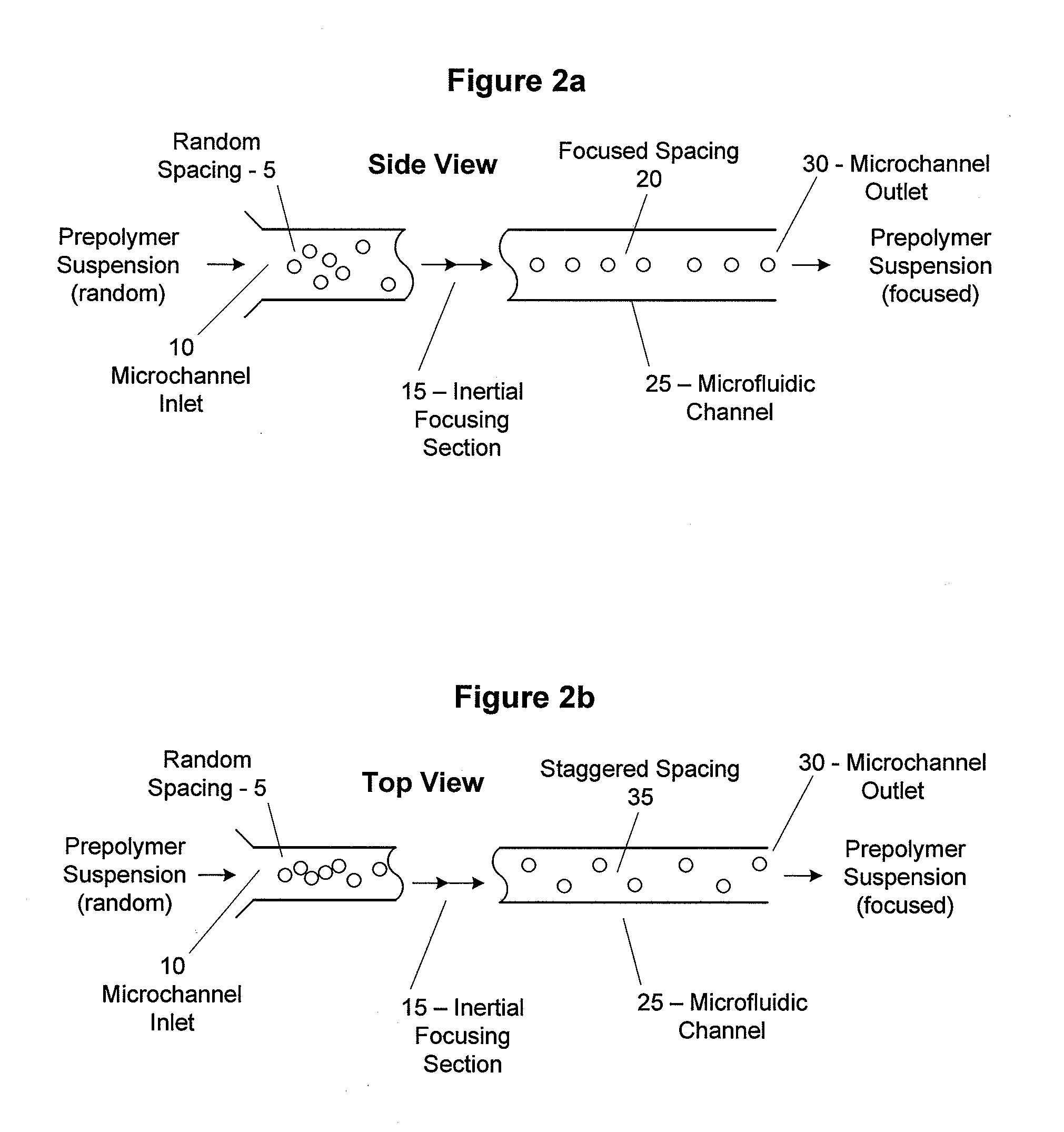Efficient microencapsulation
a microencapsulation and efficient technology, applied in the field of microencapsulation, can solve the problems of uncontrollable capsule size distribution, protein-cell and protein-marker interaction unpredictable nature, and protect implanted cells, etc., to achieve controllable or altered permeability and other characteristics of microcapsules, increase radius, channel width
- Summary
- Abstract
- Description
- Claims
- Application Information
AI Technical Summary
Benefits of technology
Problems solved by technology
Method used
Image
Examples
Embodiment Construction
[0028]A first aspect of the present invention is a method and device for efficiently and rapidly encapsulating cells, minute particles, liquids, and other matter, wherein the size of the microcapsules and the number of encapsulated particles can be controlled. Although some microfluidic devices are known to be capable of producing monodispersed microcapsules amenable to cell encapsulation and other applications, the particle-loading dynamics in these devices generally reduce the yield of usable capsules because the amount of particles per capsule (hereinafter referred to as the “occupancy”) varies according to Poisson statistics. As a result, single-particle encapsulation using previous methods was only attainable at low particle loading densities, such that a significant fraction of the microcapsules produced are empty. For example, the yield of usable particle-containing droplets using earlier methodologies will be less than 10% when the average number of particles per capsule is ...
PUM
| Property | Measurement | Unit |
|---|---|---|
| Fraction | aaaaa | aaaaa |
| Fraction | aaaaa | aaaaa |
| Fraction | aaaaa | aaaaa |
Abstract
Description
Claims
Application Information
 Login to View More
Login to View More - R&D
- Intellectual Property
- Life Sciences
- Materials
- Tech Scout
- Unparalleled Data Quality
- Higher Quality Content
- 60% Fewer Hallucinations
Browse by: Latest US Patents, China's latest patents, Technical Efficacy Thesaurus, Application Domain, Technology Topic, Popular Technical Reports.
© 2025 PatSnap. All rights reserved.Legal|Privacy policy|Modern Slavery Act Transparency Statement|Sitemap|About US| Contact US: help@patsnap.com



